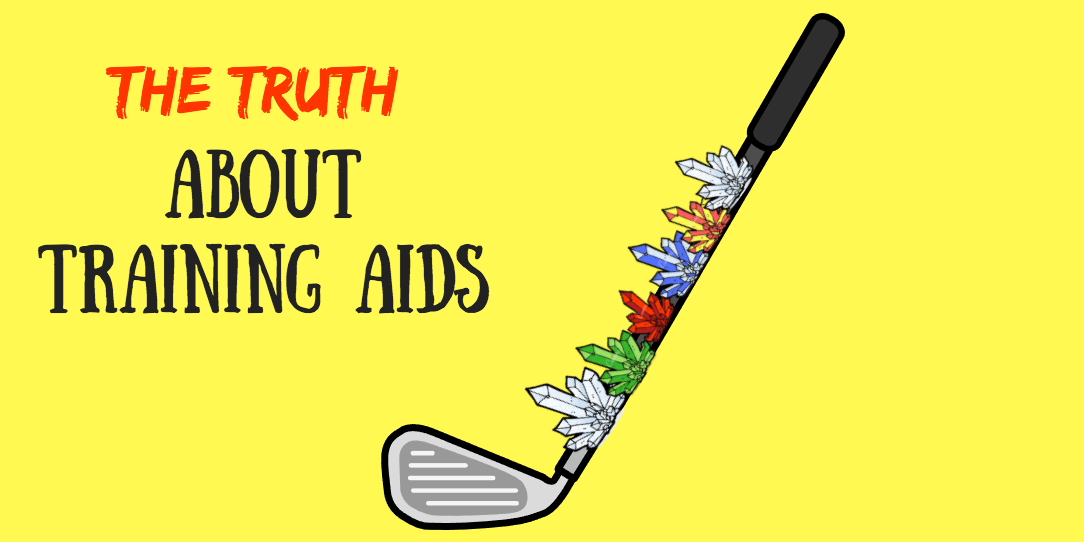
A few weeks ago I wanted to poke a little fun at golf training aids, so I posted this image to Twitter and told people I was going to be inventing a golf club lined with healing crystals in order to correct a player’s swing.
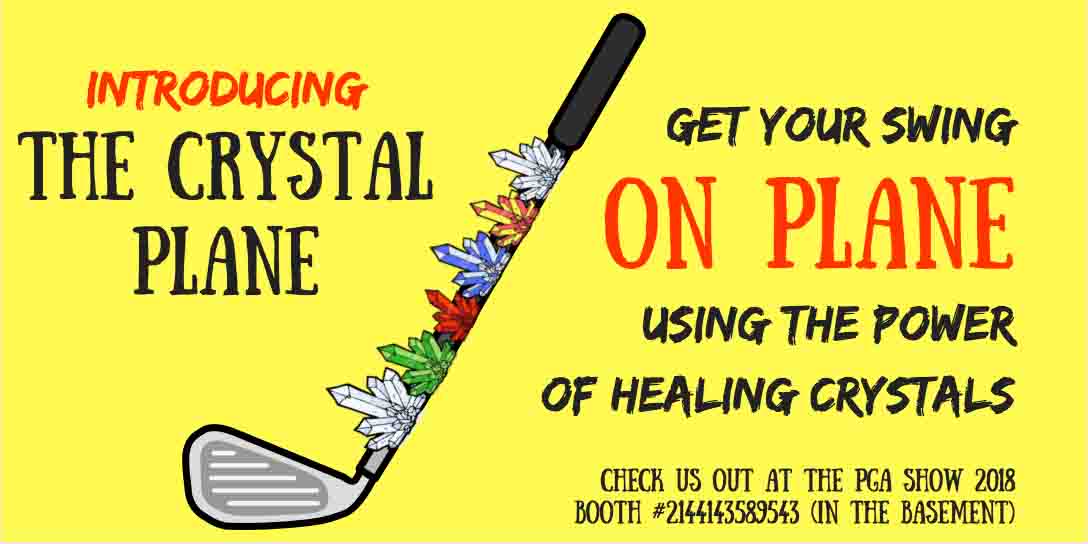
Of course it was meant to be a joke, but I'd like to discuss my thoughts on the endless supply of training aids that golfers are constantly inundated with every day.
I have two completely differing views on golf training aids. One part of me knows the vast majority of them are absolute junk and won't do one thing to help improve your golf game.
The other side of me knows that with the proper commitment and the right product, I do believe that training aids can help golfers improve.
Running this site for a couple of years, I have seen the vast array of products available to golfers, and have tested many of them. I constantly receive emails from inventors who are looking to promote their products. Sadly, I know most of them are going to fail, and all of their time and investment is not going to result in success. The golf market is brutal and only a select few are going to make it.
I’ve structured this article in two main sections, and I'll argue both points.
So here we go, the cold-hard truth about golf training aids:
Why You Should Not Buy a Training Aid
The main reason I would discourage many of you from purchasing a training aid is simply because you are going to waste your money, and here's why:
- The product itself is flawed - whatever it is trying to “fix” will not resonate with your particular swing and/or the design is terrible, and it is difficult to use.
- You are not going to actually use it - once it shows up you try it out 3-4 times, and it sits in your garage collecting dust for the next 5 years before you finally decide to trash it.
Granted, this is an extremely pessimistic view, but it’s the absolute truth.
The Training Aid is Just Not That Good
The majority of golf training aids out there are not going to help you because the designs are simply not that good. When I was at the 2017 PGA Show I got a chance to see many of them in person, and while I applauded their courage to embark on an entrepreneurial adventure, I knew their product was not going to help the average golfer.
Many of the training aids I have tried seem to suffer from a similar fate:
- The actual build and design is not intuitive – it can take forever to setup, the materials used are cheap, and overall the product is more of a burden than a help in your practice sessions
- The “fix” it is trying to address in your swing might not be an actual problem for you, or any golfer for that matter
- They are not fun to use and golfers lose interest almost immediately
- Some of them are outrageously expensive
The list can go on but those are the cornerstones of the issues I have mostly noticed. All you have to do is watch the Golf Channel for about an hour and you’ll see what I’m talking about during the commercial breaks.

Even if it’s Good, You Won’t Use it
Secondly, the reason why many of you reading this should not purchase a golf training aid is because you are not actually going to use it.
Most golfers take a very haphazard approach to their practice sessions. There is no structure and they end up doing the same things over and over again to their own detriment (something I constantly try to correct on this website).
Many golfers purchasing training aids have a similar pattern of use to children with a new toy – it shows up, you get excited and play with it for a week, but then it becomes part of that massive pile that just grows.
Again, I’m being negative on purpose, but I know many of you reading this will identify with that scenario.
The main reason I would advise against buying a golf training aid is because I don’t want you wasting your hard-earned money. I am keenly aware how expensive golf can be, and the last thing I want you doing is taking money out of your budget that could be used towards playing golf (which by the way is a great way to improve).
OK – now that I got all of that negativity out of my system, let’s move on to the positive section of this article.
Why You Should Use Golf Training Aids
I have searched far and wide, and while I haven’t tried everything out there, I have a pretty good understanding of which golf training aids are actually worth your time.
Generally the teaching community embraces many of the best products out there. Not because they are paid promoters, but because they are actually that good.
I pay close attention to what products are being used by certain teaching pros. It’s certainly not the only factor that determines if the product is actually good or not, but generally teachers won’t use something unless they actually think it could help their students.
Some teachers simply don’t believe in them, which is completely fine as well. You don’t absolutely need a training aid to help your golf game.
Purposeful Practice
In my opinion the main benefit of using a quality golf training aids is that it will provide structure and purpose to your practice sessions.
As I mentioned earlier, most golfers default to repetitive practice sessions that usually result in hitting their driver for 30 minutes straight. It does nothing to improve their performance on the course, but it could relieve some stress.
A good training aid will break that habit and get the golfer focused on something productive to their actual golf game. It doesn’t have to be for an hour either; you could use one for as little as 5-10 minutes to cement a certain feeling, and then try to recreate it separately.
By achieving that simple goal, a training aid can absolutely benefit a golfer’s game. It could even be placebo effect; we have no actual way of truly measuring the real benefit they provide.
It Actually Might Fix Something
The other main benefit of a good training aid is that it addresses an actual fundamental flaw in your technique, and then gives you the feeling of how to fix it.
Personally I believe this is the real icing on the cake. It’s one thing to tell a golfer “do this, this, and this” to change a pattern in their swing. However, it’s even more effective to put something in their hands that will help them actually feelthe fix.
Every golfer learns differently, and there’s no doubt that certain players are going to benefit from using a training aid versus a verbal or visual explanation of what they need to change.
What Are the Good Golf Training Aids Out There?
If you have headed my caution but are still interested in using a training aid to improve your golf game, I believe there is a finite list of products out there that can help.
The list I am going to provide you with are golf training aids I have personally used and can vouch for. I have not tried everything on the market, but as I stated earlier I have scoured pretty far and wide at this point.
Here is a list of what I think can help your golf game (if I have reviewed these products there is a link to those articles). I don’t want you purchasing everything because too much of a good thing can be a problem. But here is what I consider the good stuff:
Dry Eraser Pens & Dr. Scholls Odor X Spray
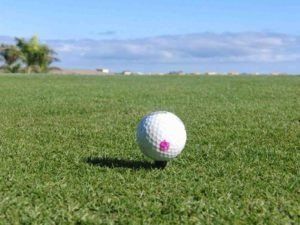
Wait, what??!! I know that seems ridiculous. Knowing your impact location is absolutely crucial for improving your play. For your irons, mark your ball with a small dot using a dry eraser pen, and then it will show up on the clubface where you made contact. Impact location is even more important for your driver because of something called gear effect. Start spraying your face during your range sessions with Dr. Scholls, and figure out where you are making contact on the driver.
Knowing your tendencies and experimenting with swing changes to improve impact location will help you immensely. This is the top of the list for me, and it's an extremely inexpensive method.
Purchase links:
Dry Eraser Pen ($5)
Dr. Scholls Odor X ($19 - pack of 3)
Orange Whip

Arguably the most successful of the golf training aids out there, the Orange Whip is probably my #1 recommendation for most golfers. It helps you warmup effectively before your round, but more importantly groove a smooth and balanced swing. Swinging it at home for as little as 5-10 minutes a day will make a tremendous difference in your swing.
Their Orange Peel is another effective tool because it allows you to practice all kinds of different stances during your practice sessions, which is an important skill-building exercise.
Purchase Links: Orange Whip ($95) Orange Peel ($180)
DST Compressor
Impact position is another problem that plagues recreational golfers. The DST Compressor has quickly become one of the most popular golf training aids out there because it helps get your body in a functional position as your strike the ball. While I wouldn’t recommend it for every single golfer out there, it has done wonders for my iron game.
Purchase Link: DST Compressor ($100)
Super Speed Golf

The golf industry is obsessed with increasing distance. While most golfers default to purchasing new equipment to add yards to their drives, one way to do it is to increase the speed of your swing. This product absolutely works (I tested it extensively), but requires a commitment to their training regimen. My recommendation would be for a more high-performance golfer.
Purchase link: Super Speed Golf ($200)
TIBA Putt
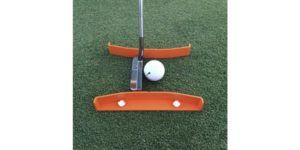
This is a simple putting training aid that helps improve the path of your putting stroke. It’s inexpensive and will help add more structure to your putting sessions.
Purchase Links: TIBA Putt ($25)
Bonus Content:Be sure to check out my complete guide to putting.
The Pill
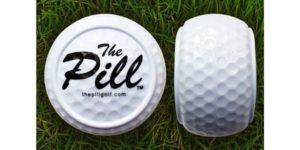
Another great, inexpensive putting aid that helps give feedback on your actual putting stroke. It also can be used with your wedges. This is one of the more creative designs out there and I recommend it for anyone who is serious about improving their putting.
Purchase link: The Pill 3-Pack ($35)
PuttOut Pressure Trainer
This is a new product on the market that allows you to turn any part of your home into a putting area. It's intuitive design gives you feedback on whether or not you made the putt, and returns the ball to you at the distance it would have ran past the hole.
Purchase link: PuttOut Golf ($30)
EyeLine Speed Trap 2.0
If you need help with your swing path and low point control, this product can help - EyeLine Speed Trap 2.0 review
Birdie Ball
The most realistic, cost-effective putting surface you will find to use at home. Highly recommended for golfers who have space in their homes for a full putting surface.
Purchase link: Birdie Ball ($50 - $250)
Zepp Golf
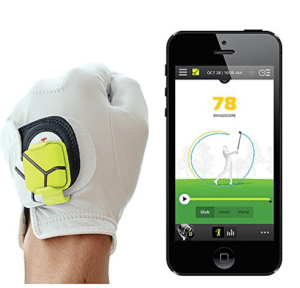
I would caution some golfers not to use a swing analyzer because they can complicate things, but I think Zepp Golf has done a tremendous job making their product intuitive. I urge all golfers to work on their tempo using this method with any swing analyzer. Zepp is easier to use because their sensor mounts to your glove, while most of the others require you to mount to the actual club which can make it burdensome to change during your practice sessions.
Purchase Link: Zepp Golf (original version - $70) Zepp Golf 2 (newer version - $140)
Blast Motion
If you want honest feedback on your putting stroke I highly recommend this product because it focuses on timing. The app is nicely designed and presents info to golfers in a simple fashion. Their technology has been embraced by many teaching pros, and many professional golfers are using it as well.
Purchase Link: Blast Motion ($95)
GAME GOLF
Technically GAME GOLF is not a true training aid, but I’m adding it to the list because I believe tracking your stats is absolutely necessary if you want to improve as a golfer. Their GPS tracking system will allow you to gain a real understanding of where your game needs improvement with the most important data – what is actually going on during your round.
Purchase Link: GAME GOLF ($150)
We care about the protection of your data Read our Privacy Policy